Project brief
A “floating city” concept is inspired from history of human living in communities on the water and some modern cities like Amsterdam and Dubai palm. But more recently, modern environmental, social developments and the introduction of new technology have renewed global interest in the idea of sustainable urban, ocean-based communities.
We want to create a generative model using Grasshopper that will create different alternative realities for a floating city. Then we will use the power of Network X to find the best solution for urban planning where as the boundary shape will remain the same, the internal network will change.
Strategy of the floating city
- The city would consist of a collection of connected street networks.
- Placing maximum amenities to the areas where the networks are denser.
- Keeping the balance in amenity distribution and analyzing them.
Workflow
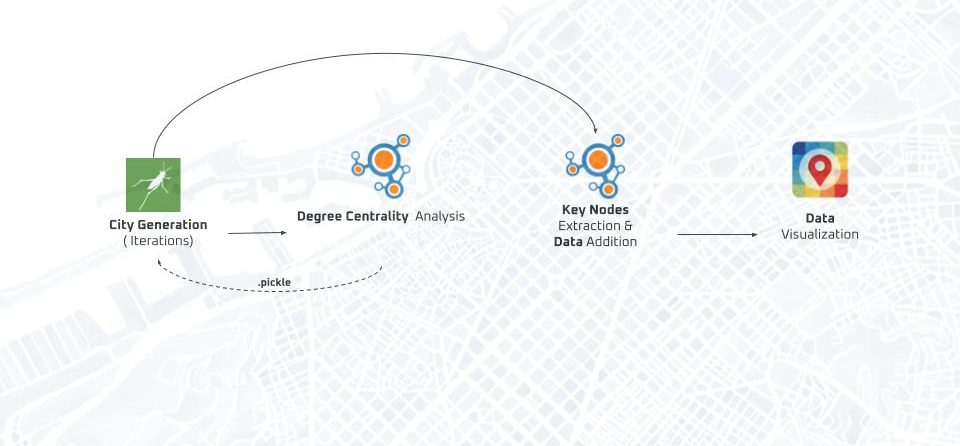
City Generation Overview
We have used decoding space in grasshopper to generate different iterations of city network within the defined boundary. we have used different parameters’ to support the generative process such as maximum and minimum length of the network , number of branches and rotation angle.
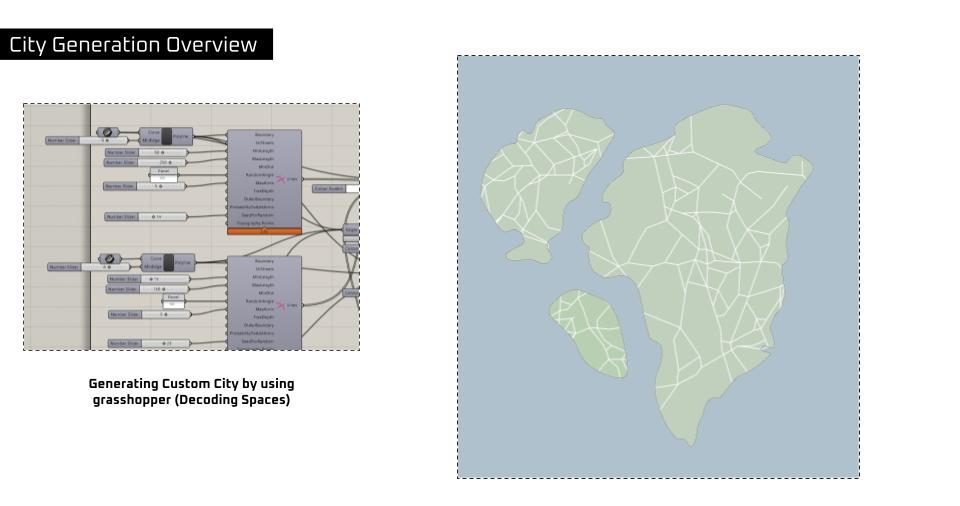
Network Generation iterations
We have used degree centrality analysis to find out the best possible areas to place the different amenities around the certain nodes. The graph scaler represent the effectiveness of each nodes after degree centrality analysis.
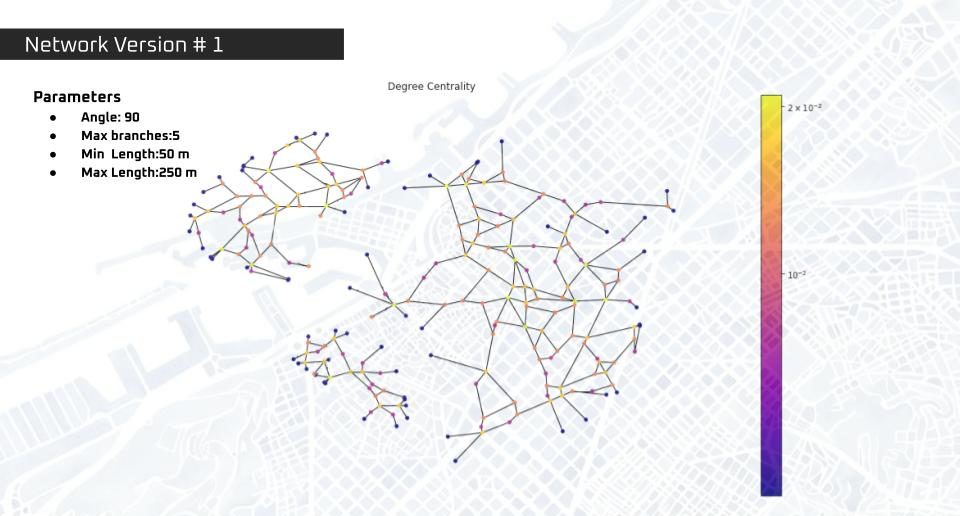
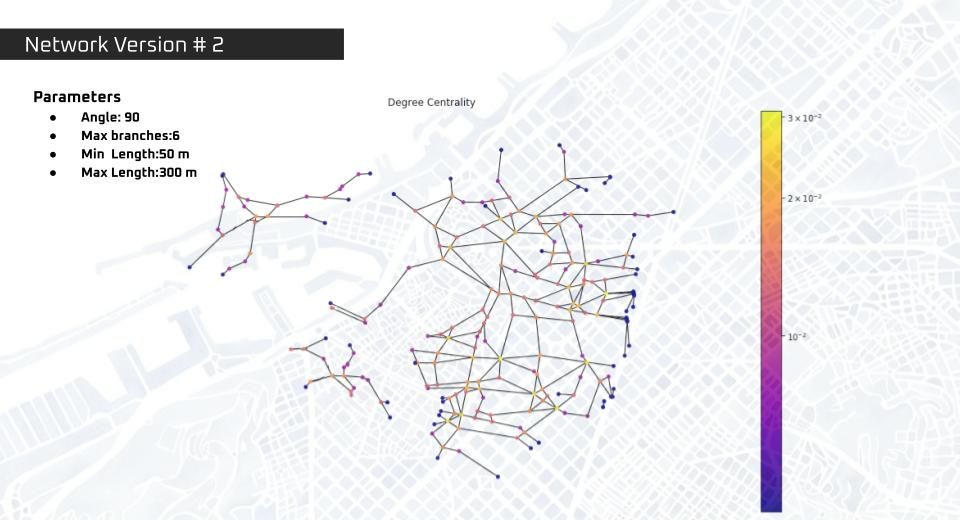
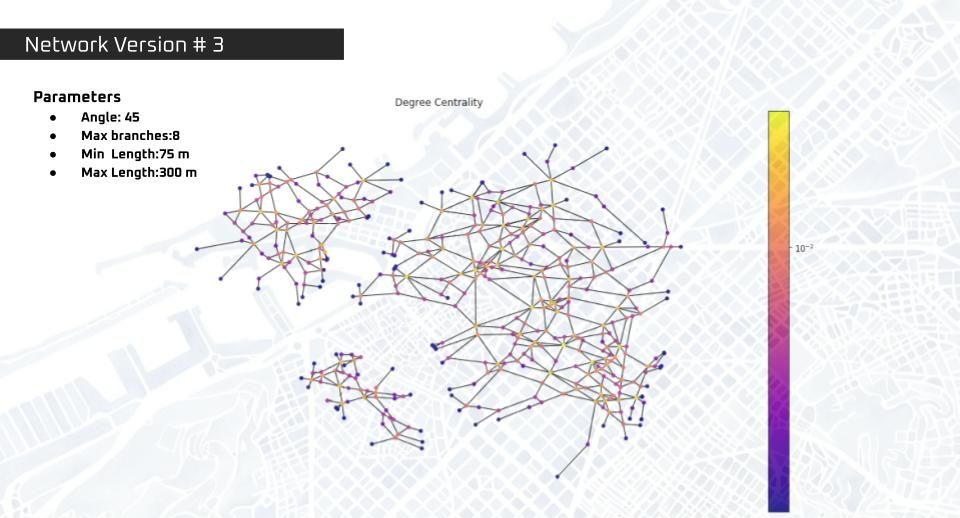
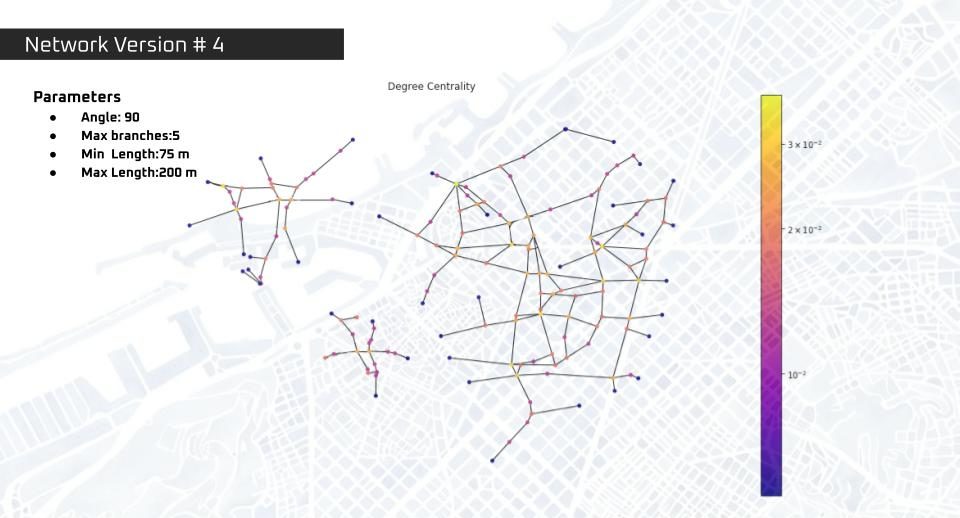
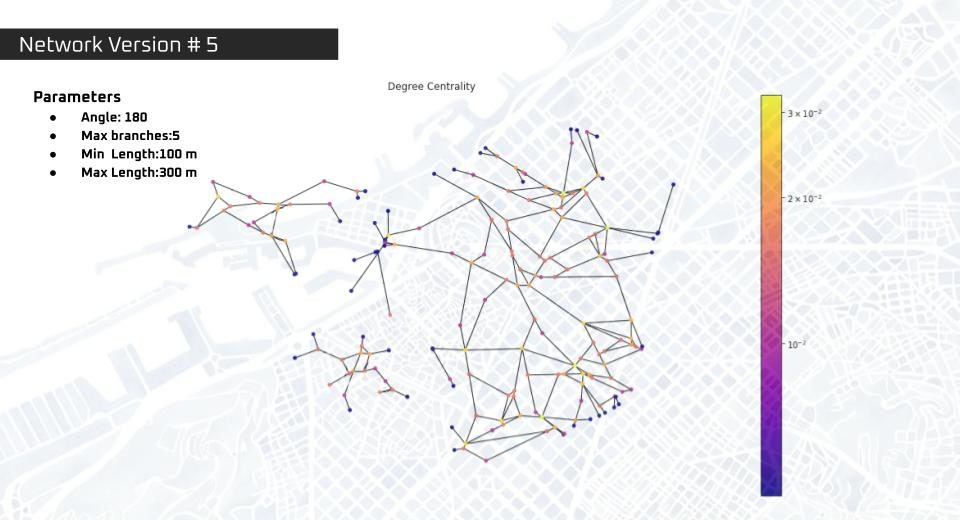
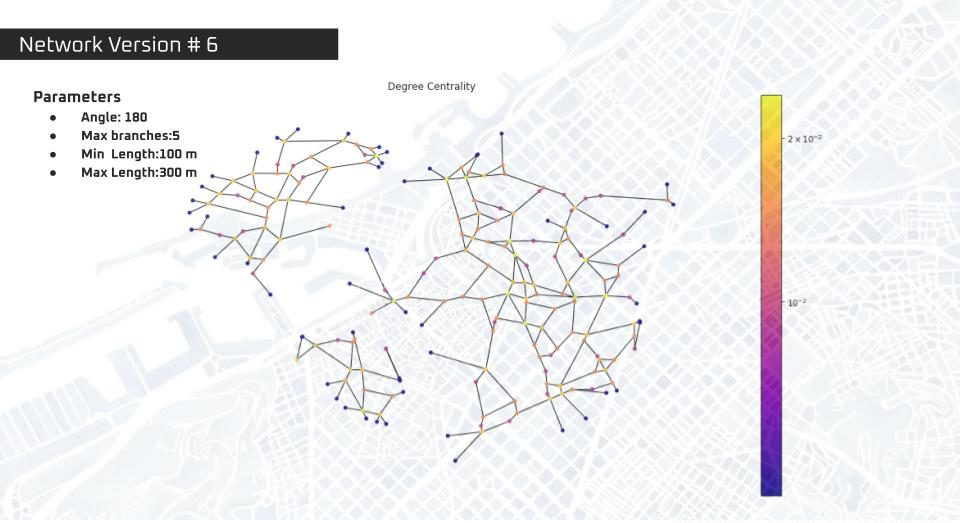
Heat map Development
Based on the degree centrality we have created our heat map for future urban hubs.
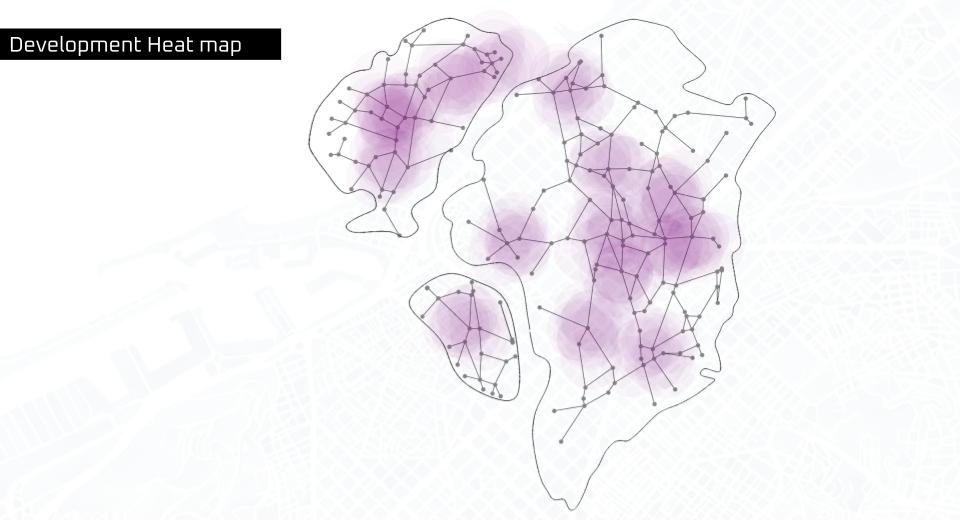
Amenities locations
Based on the degree centrality analysis we have placed different amenities around the selected nodes. More amenities are located near the denser network which represent the future potential area for urban development.

Future steps
It would be interesting to add more layers to the created graph and analyze the different parameters such as achieving strong network connectivity, extending the network lifetime ,adding weight function ,function-based placement strategies etc.
Credit
The “Floating city “ is a project of IAAC, Institute of Advanced Architecture of Catalonia, developed at Master In Advanced Computation For Architecture & Design in 2021/2022 by Students: Sidhant Choudhary, Mansoor Awais, Gerald Mandevhana and Bruno Martorelli. Faculty: David Andres Leon Faculty assistant: Dai Kandil.